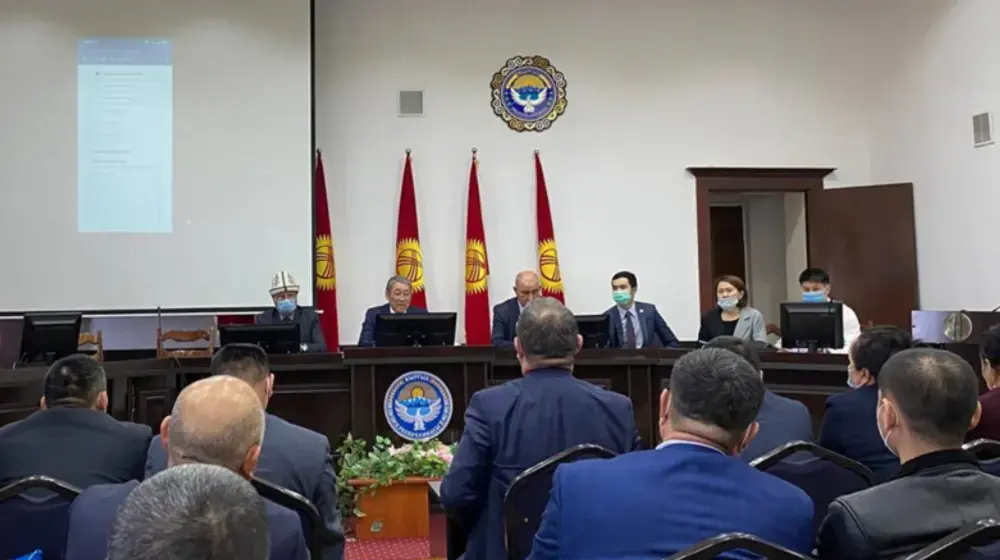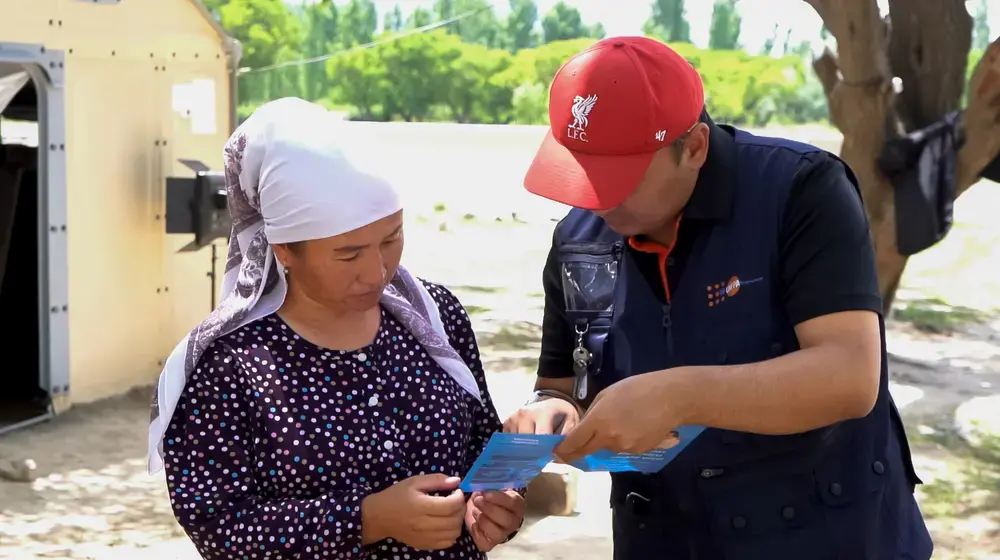“There was no need to carry bags, paper and pens,” said Kanat Sydykov, a 20-year-old student at Kyrgyz State University and census taker in Kyrgyzstan. “It is a census literally conducted on the tips of the enumerators’ fingers.”
The national population and housing census took place in Kyrgyzstan between 25 March and 3 April 2022. It is the third census the Central Asian country has undertaken since its independence in 1991 and it is the first to be conducted electronically.
Enumerators collected census data using a mobile app developed by the World Bank and tested during a pilot census in 2019. Each enumerator had to collect data from 400 people during the 10-day census period.
“Previous censuses were paper-based,” said Dinara Isakova, a leading specialist at the Bishkek Statistics Administration of the National Statistical Committee of the Kyrgyz Republic. “This process took more time, as each paper questionnaire needed to be encoded, digitized and only then the results could be retrieved. This year, the census is totally automated. Each enumerator is provided with SIM cards that have access to the specially developed mobile application. They simply visit the households and push the buttons within the app.”
After collection, the data was automatically transferred from the app to a database at the National Statistical Committee. Some 28,000 personnel were engaged in the census, including 24,000 enumerators. UNFPA supported the National Statistical Committee with methodological support, training, monitoring and with the development of the census questionnaire under the CISPop “Better Data for Better Policies” programme.
“The results of the population and housing census are pivotal for evidenced-based decisions and policies," said Azamat Baialinov, Head of the UNFPA Country Office in Kyrgyzstan. “It provides an instant portrait of society and can be used for the development of forecasts and programmes as well.”
The census will provide data on the social and economic situation, education level of citizens, marriage and family structures and the ethnolinguistic composition of the population of almost 7 million.
“Many sociodemographic issues are tackled with the help of the census data,” said Dinara Isakova. “One example is that we can identify where a new school, a new kindergarten or a new hospital needs to be built and allocate the governmental budget accordingly.
People living in remote areas, such as Chatkal, Arpa, and on the pastures at high altitude in Ak-Sai, will be surveyed at the end of April. The roads are blocked by snow for much of the month making it impossible for the enumerators to collect data.
The data gathered from the census will inform policymaking and infrastructure planning. It will enable Kyrgyzstan to become more demographically resilient and make progress towards achieving its development goals.




